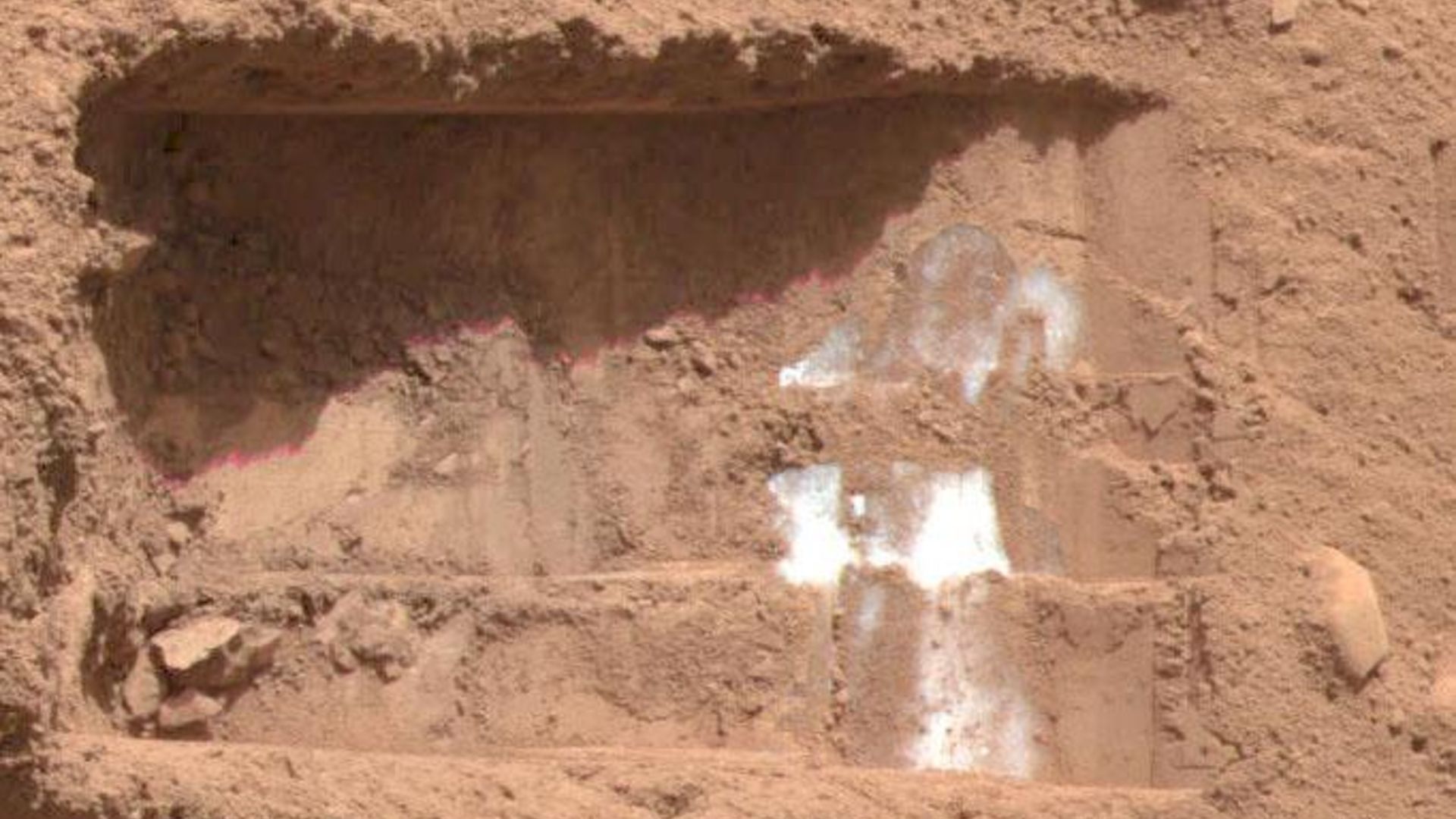
If life ever existed on Mars, traces of it might still be frozen beneath the planet’s icy surface.
A new study from NASA and Penn State University suggests fragments of biomolecules from ancient microbes could survive in Martian ice for tens of millions of years — long enough for future missions to potentially find them, according to a statement from the university.
In laboratory experiments simulating Mars conditions, researchers froze samples of E. coli bacteria in two different environments: pure water ice and a mixture of water and ingredients found in Martian soil, including silicate-based rocks and clay. The samples were cooled to minus 60 degrees Fahrenheit (minus 51.1 degrees Celsius) — the temperature of icy regions on Mars — and then exposed to radiation levels equivalent to what they would experience over 20 million years on Mars. The results were extended through modeling to represent 50 million years of exposure, according to the statement.
“Fifty million years is far greater than the expected age for some current surface ice deposits on Mars, which are often less than two million years old, meaning any organic life present within the ice would be preserved,” Christopher House, co-author of the study and professor of geosciences, said in the statement. “That means if there are bacteria near the surface of Mars, future missions can find it.”
The researchers found that the amino acids — the building blocks of proteins — survived far better in pure ice than in ice mixed with sediment. More than 10% of the original amino acids remained intact after the simulated 50-million-year exposure, while those in the soil mixture degraded 10 times faster and did not survive. When tested under even colder temperatures similar to those on Europa, an icy moon of Jupiter, and Enceladus, an icy moon of Saturn, the researchers found it further reduced the rate of deterioration.
Therefore, the researchers suggest that in pure ice, radiation byproducts such as free radicals become trapped and immobilized, slowing the chemical breakdown of biological molecules. In contrast, the minerals in Martian soil appear to create thin films of liquid that allow destructive particles to move and cause more damage.
“These results suggest that pure ice or ice-dominated regions are an ideal place to look for recent biological material on Mars,” Alexander Pavlov, lead author and a space scientist at NASA Goddard Space Flight Center, said in the statement.
This can help better plan which areas to target during future Mars missions and how to design tools capable of drilling into subsurface ice deposits — most of which are believed to be less than two million years old, meaning any biomolecular traces from a more recent habitable period could be preserved in the frozen ice.
Their findings were published Sept. 12 in the journal Astrobiology.
